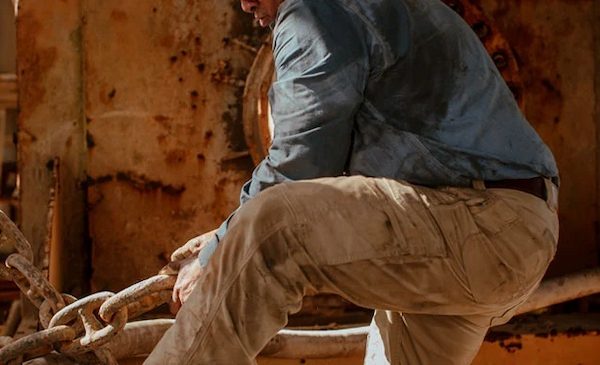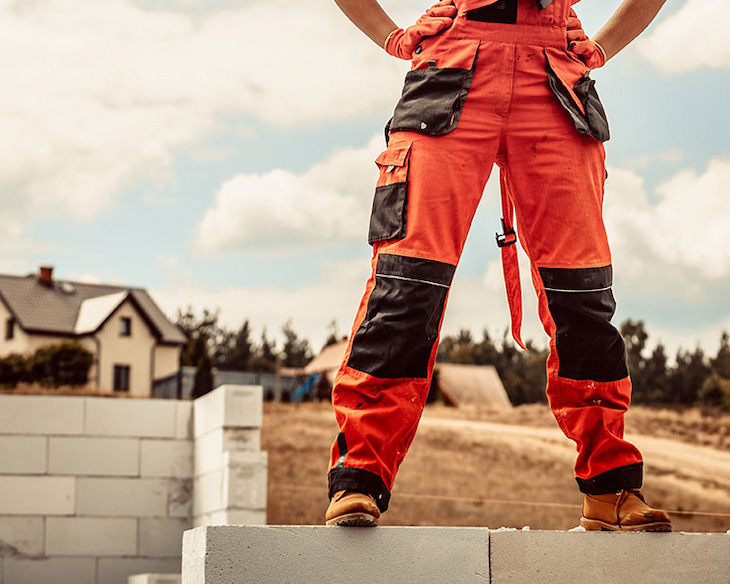30
Sep

Choosing pants for work isn’t the same as buying your everyday pair of jeans. There are many factors to consider. The material must endure heavy wear and tear, the fit and style should allow for easy movement, and the features must be both practical and efficient. To make selecting workwear pants easier, we’ve put together this simple guide to help you find the perfect pair.
Boost your productivity at work with a pair of durable and functional trousers. There’s a broad range of workwear pants available to suit different industries and job requirements. But choosing the right pair can be a daunting task. The key is to start by assessing what you need most from your work pants—then match the material, features, and fit to your specific needs. Fortunately, with such a wide variety available, you’ll likely find your ideal pair in no time.
Carpenter trousers are often constructed of denim or cotton duck and have numerous tool pockets as well as a hammer loop. Carpenter pants are designed with a loose fit to allow for movement and flexibility, as well as strengthened tool belt loops. They may also include built-in tool pouches, eliminating the need for a tool belt.
Construction trousers must be highly durable, useful, and safe. As a result, construction work pants are often made of durable cotton duck canvas with sewn-on belt loops, bartacks, and reinforced knees. They also include plenty of pockets for keeping things close at hand.
In terms of materials, mechanics choose trousers made of a cotton-polyester combination- cotton for ventilation, polyester for hardness and stain resistance. Ample pockets are a must, as is the use of Spandex fabric and a gusseted crotch for enhanced manoeuvrability.
Dungarees are a classic work type made of denim that is suitable for a variety of jobs. They’re made of strong cotton denim that’s extremely durable, and designs come with a variety of features including cargo pockets, articulated knees, crotch gussets, mobile phone pockets, and more.

The fit of your work trousers is a matter of personal preference, but just like choosing the right fabric, the wrong fit can ruin your day. It’s important to understand the various fits available and choose one that’s appropriate for your job conditions.
Relaxed-fit work trousers are designed for comfort. They offer extra room in the seat, thighs, and legs, reducing the stiffness that often comes with tighter fits. However, some workers find the bagginess of relaxed-fit trousers less appealing, so keep this in mind when shopping.
Regular-fit pants for work have less leeway in the seat and thigh than relaxed-fit pairs. If you want to avoid baggy pants, original-fit work pants may be a good option. They’re easy to move around in without becoming too tight.
When people hear the term “slim fit,” they usually think of skinny pants. Slim-fit work pants are not exactly like this; they merely provide a tighter, more efficient fit in the legs. They’re not too tight, though, and the leg openings should allow you to wear your work boots over them comfortably. If you prefer a more modern fit, especially if you don’t want baggy work pants, slim-fit designs are the way to go.
Work trousers aren’t typically made from a single fabric. Instead, they are often constructed from a blend of materials to harness the advantages of each. This helps create pants that are durable, comfortable, and suited for specific job requirements.
Cotton is one of the most widely used natural fibres in clothing, so it’s no surprise that it features heavily in workwear. Cotton work trousers are extremely breathable, making them ideal for staying comfortable throughout the day. It’s also a heavy material, which provides warmth in cooler conditions. Cotton is often the base for fabrics such as denim and duck.
Denim, the fabric behind blue jeans, is a tightly woven cotton material renowned for its durability. While denim can be stiff and may cause discomfort initially, its robust, hard-wearing nature makes it a popular choice for those who need tough, long-lasting work trousers. Denim is sometimes blended with other fabrics to enhance comfort without compromising its strength.
Cotton duck is another tightly woven cotton fabric, similar to denim but much tougher. It’s a canvas material used in products like hammocks and sails. Unlike denim, which softens over time, cotton duck retains its strength and structure, making it highly tear-resistant and great for work trousers that need to withstand harsh environments. It also offers excellent wind protection.
Polyester is a durable, synthetic material that holds up well against wear and tear. It dries quickly and is highly resistant to stains, making it ideal for particularly messy jobs. Polyester is also wrinkle-resistant, ensuring that you look neat and professional on the job.
While Spandex is used sparingly in work trousers, its ability to stretch and return to its original shape makes it an important component. Often blended with cotton or polyester, it adds flexibility and mobility, particularly in high-movement areas like the waistband. This can greatly enhance comfort and ease of movement while working.
Cordura is known for its exceptional durability and abrasion resistance. Often used as reinforcement in high-wear areas such as the knees and seat, it protects the trousers from damage and extends their lifespan, making it an excellent choice for those working in rough conditions.